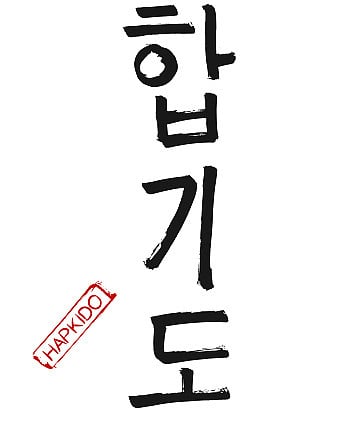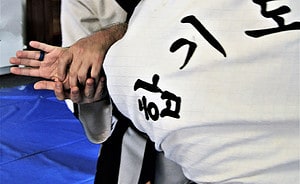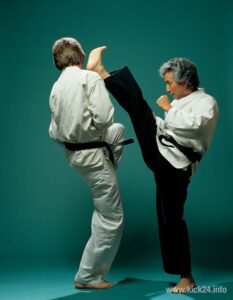What is Hapkido?
“Unlock Your Inner Strength with Hapkido!”
Table of Contents
-
- Introduction
- What is Hapkido and How Does it Differ from Other Martial Arts?
- The History and Origins of Hapkido
- The Benefits of Practicing Hapkido
- The Different Styles of Hapkido
- The Different Techniques Used in Hapkido
- The Different Weapons Used in Hapkido
- The Different Types of Hapkido Uniforms
- The Different Levels of Hapkido
- The Different Types of Hapkido Tournaments
- The Different Types of Hapkido Schools and Instructors
- Conclusion
Introduction
Hapkido is a Korean martial art that combines elements of both hard and soft styles of martial arts. It is a form of self-defense that emphasizes circular motion, joint locks, and throws. Hapkido also includes strikes, kicks, and other offensive techniques. The goal of Hapkido is to use the opponent’s energy against them, rather than relying on physical strength. Hapkido is a great way to learn self-defense, improve physical fitness, and gain confidence.
What is Hapkido and How Does it Differ from Other Martial Arts?
Hapkido is a Korean martial art that combines elements of both hard and soft styles of martial arts. It is a form of self-defense that emphasizes circular motion, joint locks, throws, and strikes. Hapkido is often referred to as the “art of coordinated power” because it combines both physical and mental techniques.
Hapkido differs from other martial arts in several ways. First, it is a comprehensive system that includes both offensive and defensive techniques. It also emphasizes the use of joint locks, throws, and strikes, which are not commonly found in other martial arts. Additionally, Hapkido focuses on circular motion and the use of an opponent’s energy against them, rather than relying solely on physical strength.
Hapkido also emphasizes the use of mental techniques, such as meditation and visualization, to help practitioners develop a sense of calm and focus. This is in contrast to other martial arts, which often focus solely on physical techniques.
Finally, Hapkido is a holistic system that emphasizes the development of the whole person, rather than just physical techniques. It teaches practitioners to be aware of their environment and to use their mental and physical skills to protect themselves and others.
Overall, Hapkido is a unique martial art that combines elements of both hard and soft styles of martial arts. It emphasizes the use of joint locks, throws, and strikes, as well as mental techniques such as meditation and visualization. Additionally, it is a holistic system that focuses on the development of the whole person.
The History and Origins of Hapkido
Hapkido is a Korean martial art that has been practiced for centuries. It is a form of self-defense that combines elements of both hard and soft styles of martial arts. It is a comprehensive system of joint locks, throws, kicks, and strikes that can be used to defend oneself against an attacker.
The origins of Hapkido can be traced back to the ancient Korean martial art of Taekkyon. Taekkyon was a form of unarmed combat that was developed by the Korean people during the Joseon Dynasty (1392-1910). It was a highly effective form of self-defense that was used by the military and the general population alike.
In the early 1900s, a Korean martial artist named Choi Yong-Sool began to study Taekkyon and other martial arts. He combined the techniques he learned from Taekkyon with those of other martial arts, such as Judo and Aikido, to create a new form of self-defense. This new form of martial arts was called Hapkido.
Hapkido is a highly effective form of self-defense that can be used in a variety of situations. It is based on the principles of non-resistance, circular motion, and the use of an attacker’s energy against them. It is a versatile martial art that can be used to defend against both armed and unarmed attackers.
Hapkido is a popular martial art that is practiced around the world. It is a great way to stay in shape, learn self-defense, and gain confidence. It is a martial art that can be practiced by people of all ages and skill levels.
The Benefits of Practicing Hapkido
Hapkido is a Korean martial art that combines elements of both hard and soft styles of martial arts. It is a comprehensive system of self-defense that utilizes joint locks, throws, kicks, and strikes to defend against an attacker. Practicing Hapkido can provide numerous physical and mental benefits.
Physically, Hapkido can help improve strength, flexibility, balance, and coordination. It is a full-body workout that can help build muscle and burn calories. Practicing Hapkido can also help improve cardiovascular health and increase endurance. Additionally, Hapkido can help improve reflexes and reaction time, making it an effective self-defense system.
Mentally, Hapkido can help improve focus and concentration. Practicing Hapkido requires intense concentration and focus, which can help improve mental clarity and alertness. Additionally, Hapkido can help reduce stress and anxiety. The physical and mental discipline required to practice Hapkido can help practitioners develop a sense of inner peace and calm.
Hapkido can also help improve self-confidence and self-esteem. Practicing Hapkido can help practitioners develop a sense of self-discipline and self-control. Additionally, the physical and mental discipline required to practice Hapkido can help practitioners develop a sense of self-respect and self-worth.
Finally, practicing Hapkido can help practitioners develop a sense of community. Hapkido is a martial art that is practiced in a group setting, which can help practitioners develop strong relationships with their peers. Additionally, the physical and mental discipline required to practice Hapkido can help practitioners develop a sense of respect and appreciation for their peers.
In conclusion, practicing Hapkido can provide numerous physical and mental benefits. It can help improve strength, flexibility, balance, and coordination. Additionally, it can help improve focus and concentration, reduce stress and anxiety, and improve self-confidence and self-esteem. Finally, it can help practitioners develop a sense of community and respect for their peers.
The Different Styles of Hapkido
Hapkido is a Korean martial art that combines elements of both hard and soft styles of martial arts. It is a dynamic and comprehensive martial art that utilizes joint locks, throws, kicks, and strikes to defend against an attacker. Hapkido is a versatile martial art that can be adapted to fit the needs of any practitioner.
There are several different styles of Hapkido, each with its own unique approach to the martial art. The most common styles are:
1. Traditional Hapkido: This style of Hapkido is the most widely practiced and is based on the teachings of the founder of Hapkido, Choi Yong-Sool. It emphasizes the use of joint locks, throws, and strikes to defend against an attacker.
2. Combat Hapkido: This style of Hapkido is focused on practical self-defense techniques and is designed to be used in real-life situations. It emphasizes the use of strikes, kicks, and throws to defend against an attacker.
3. Sport Hapkido: This style of Hapkido is focused on competition and is designed to be used in tournaments. It emphasizes the use of throws, joint locks, and strikes to score points against an opponent.
4. Soft Hapkido: This style of Hapkido is focused on the use of circular movements and is designed to be used in a non-aggressive manner. It emphasizes the use of joint locks, throws, and strikes to defend against an attacker without causing serious injury.
5. Acrobatic Hapkido: This style of Hapkido is focused on the use of acrobatic techniques and is designed to be used in a non-aggressive manner. It emphasizes the use of throws, joint locks, and strikes to defend against an attacker without causing serious injury.
No matter which style of Hapkido you choose to practice, it is important to remember that the goal of Hapkido is to defend yourself without causing serious injury to your attacker. Hapkido is a versatile martial art that can be adapted to fit the needs of any practitioner.
The Different Techniques Used in Hapkido
Hapkido is a Korean martial art that combines elements of both hard and soft styles of martial arts. It is a dynamic and comprehensive martial art that utilizes joint locks, throws, kicks, punches, and other techniques to defend against an attacker. Hapkido is a highly effective form of self-defense that can be used in a variety of situations.
The techniques used in Hapkido are divided into three main categories: kicking, striking, and joint locks. Kicking techniques are used to create distance between the practitioner and the attacker, as well as to deliver powerful strikes to vulnerable areas of the body. Striking techniques involve the use of punches, palm strikes, and elbow strikes to create openings for joint locks and throws. Joint locks are used to control an attacker’s movements and to cause pain or incapacitation.
Hapkido also utilizes a variety of throws and takedowns to take an attacker off balance and to the ground. These throws are often combined with joint locks and strikes to create a more effective defense. Additionally, Hapkido practitioners use a variety of weapons, such as swords, staffs, and knives, to defend against an attacker.
Hapkido is a highly effective form of self-defense that can be used in a variety of situations. Its techniques are designed to be used in a defensive manner, and practitioners are taught to use the minimum amount of force necessary to protect themselves. With proper training and practice, Hapkido can be an invaluable tool for self-defense.
The Different Weapons Used in Hapkido
Hapkido is a Korean martial art that combines elements of both hard and soft styles of martial arts. It is a form of self-defense that emphasizes joint locks, throws, and strikes. Hapkido practitioners use a variety of weapons to enhance their training and to increase their effectiveness in self-defense.
The primary weapon used in Hapkido is the jukdo, or short staff. This weapon is typically made of hardwood and is about three feet long. It is used to practice strikes, blocks, and joint locks. The jukdo is also used to practice techniques such as throws, sweeps, and disarms.
The cane is another weapon used in Hapkido. This weapon is typically made of hardwood and is about four feet long. It is used to practice strikes, blocks, and joint locks. The cane is also used to practice techniques such as throws, sweeps, and disarms.
The sword is another weapon used in Hapkido. This weapon is typically made of steel and is about three feet long. It is used to practice strikes, blocks, and joint locks. The sword is also used to practice techniques such as throws, sweeps, and disarms.
The knife is another weapon used in Hapkido. This weapon is typically made of steel and is about six inches long. It is used to practice strikes, blocks, and joint locks. The knife is also used to practice techniques such as throws, sweeps, and disarms.
The nunchaku is another weapon used in Hapkido. This weapon is typically made of hardwood and is about two feet long. It is used to practice strikes, blocks, and joint locks. The nunchaku is also used to practice techniques such as throws, sweeps, and disarms.
Hapkido practitioners also use a variety of other weapons such as the sai, tonfa, kama, and bo. These weapons are used to practice strikes, blocks, and joint locks. They are also used to practice techniques such as throws, sweeps, and disarms.
Hapkido is a martial art that emphasizes the use of weapons to enhance training and to increase effectiveness in self-defense. The weapons used in Hapkido include the jukdo, cane, sword, knife, nunchaku, sai, tonfa, kama, and bo. These weapons are used to practice strikes, blocks, and joint locks. They are also used to practice techniques such as throws, sweeps, and disarms.
The Different Types of Hapkido Uniforms
Hapkido is a Korean martial art that combines elements of both hard and soft styles of martial arts. It is a dynamic and powerful form of self-defense that emphasizes joint locks, throws, and strikes. As with any martial art, the proper uniform is essential for both safety and respect. There are several different types of Hapkido uniforms available, each with its own unique features and benefits.
The most common type of Hapkido uniform is the traditional dobok. This is a lightweight, loose-fitting garment that is typically made of cotton or a cotton-polyester blend. It is usually white or black in color and features a V-neck and long sleeves. The dobok is designed to provide maximum comfort and mobility during training. It is also designed to be lightweight and breathable, allowing for maximum flexibility and agility.
Another type of Hapkido uniform is the gi. This is a heavier, more structured garment that is typically made of a cotton-polyester blend. It is usually white or black in color and features a V-neck and long sleeves. The gi is designed to provide more protection and support during training. It is also designed to be more durable and long-lasting than the dobok.
Finally, there is the hakama. This is a traditional Japanese garment that is typically made of a heavy cotton or linen fabric. It is usually black in color and features a wide waistband and long, pleated legs. The hakama is designed to provide maximum protection and support during training. It is also designed to be more durable and long-lasting than the dobok or gi.
No matter which type of Hapkido uniform you choose, it is important to remember that it should fit properly and be comfortable. The uniform should also be made of high-quality materials that are designed to last. With the right uniform, you can ensure that you are safe and protected during your Hapkido training.
The Different Levels of Hapkido
Hapkido is a Korean martial art that combines elements of both hard and soft styles of martial arts. It is a comprehensive system of self-defense that includes joint locks, throws, kicks, punches, and pressure point techniques. Hapkido is a dynamic and versatile martial art that can be practiced by people of all ages and abilities.
Hapkido is divided into three main levels: beginner, intermediate, and advanced. Each level has its own set of techniques and principles that must be mastered in order to progress to the next level.
The beginner level of Hapkido focuses on the basics of the martial art. Students learn the fundamentals of balance, posture, and movement. They also learn basic strikes, kicks, and blocks. At this level, students are introduced to joint locks, throws, and pressure point techniques.
The intermediate level of Hapkido builds on the basics learned in the beginner level. Students learn more advanced techniques such as grappling, ground fighting, and weapons defense. They also learn how to apply the principles of Hapkido in a real-life situation.
The advanced level of Hapkido is the most challenging. Students learn how to use the principles of Hapkido in a variety of situations. They also learn how to use weapons such as swords, sticks, and knives. At this level, students are expected to have a thorough understanding of the principles and techniques of Hapkido.
Hapkido is a dynamic and versatile martial art that can be practiced by people of all ages and abilities. It is divided into three main levels: beginner, intermediate, and advanced. Each level has its own set of techniques and principles that must be mastered in order to progress to the next level. With dedication and practice, anyone can become a proficient practitioner of Hapkido.
The Different Types of Hapkido Tournaments
Hapkido is a Korean martial art that combines elements of both hard and soft styles of martial arts. It is a dynamic and powerful martial art that emphasizes joint locks, throws, and strikes. As such, it is a popular martial art for tournaments and competitions. There are several different types of Hapkido tournaments, each with its own unique rules and regulations.
The first type of Hapkido tournament is the traditional tournament. This type of tournament is based on the traditional rules and regulations of Hapkido. Competitors will compete in a series of matches, with the winner of each match advancing to the next round. The winner of the tournament is the competitor who wins the most matches.
The second type of Hapkido tournament is the point-based tournament. In this type of tournament, competitors are awarded points for each technique they successfully execute. The competitor with the most points at the end of the tournament is declared the winner.
The third type of Hapkido tournament is the submission tournament. In this type of tournament, competitors must submit their opponent by using a joint lock or a choke. The competitor who successfully submits their opponent is declared the winner.
The fourth type of Hapkido tournament is the team tournament. In this type of tournament, teams of two or more competitors compete against each other. The team with the most points at the end of the tournament is declared the winner.
Finally, the fifth type of Hapkido tournament is the open tournament. This type of tournament is open to all competitors, regardless of their rank or experience level. The winner of the tournament is the competitor who wins the most matches.
No matter which type of Hapkido tournament you choose to participate in, it is important to remember that safety is always the top priority. All competitors should wear the appropriate safety gear and follow the rules and regulations of the tournament. With the right preparation and attitude, you can have a great time competing in Hapkido tournaments.
The Different Types of Hapkido Schools and Instructors
Hapkido is a Korean martial art that combines elements of both hard and soft styles of martial arts. It is a comprehensive system of self-defense that includes joint locks, throws, kicks, punches, and pressure point techniques. Hapkido schools and instructors vary in their approach to teaching the art, and it is important to understand the different types of schools and instructors available before choosing one.
The first type of Hapkido school is the traditional school. These schools typically teach the art in its purest form, focusing on the techniques and principles of the art rather than on sport or competition. Traditional Hapkido schools often emphasize the philosophical and spiritual aspects of the art, and the instructors are usually highly experienced and knowledgeable in the art.
The second type of Hapkido school is the sport school. These schools focus on the competitive aspects of the art, and the instructors are usually experienced in competition. The techniques taught in these schools are often adapted for sport, and the emphasis is on winning tournaments and matches.
The third type of Hapkido school is the hybrid school. These schools combine elements of both traditional and sport Hapkido, and the instructors are usually experienced in both aspects of the art. The techniques taught in these schools are often adapted for both self-defense and competition.
The fourth type of Hapkido school is the self-defense school. These schools focus on the practical application of the art for self-defense, and the instructors are usually experienced in teaching self-defense techniques. The techniques taught in these schools are often adapted for real-world situations.
Finally, there are also individual instructors who teach Hapkido. These instructors may teach in a variety of styles, depending on their experience and background. It is important to research an individual instructor before enrolling in their classes.
No matter which type of Hapkido school or instructor you choose, it is important to make sure that they are experienced and knowledgeable in the art. It is also important to make sure that the school or instructor is teaching the art in a safe and respectful manner. With the right school or instructor, you can learn the art of Hapkido and gain the skills and knowledge necessary to defend yourself.
Conclusion
Hapkido is a martial art that combines elements of both striking and grappling techniques. It is a powerful and effective self-defense system that can be used to protect oneself in dangerous situations. Hapkido is also a great way to stay in shape and improve overall physical and mental health. With its emphasis on self-defense, Hapkido is an excellent choice for anyone looking to learn a martial art.






